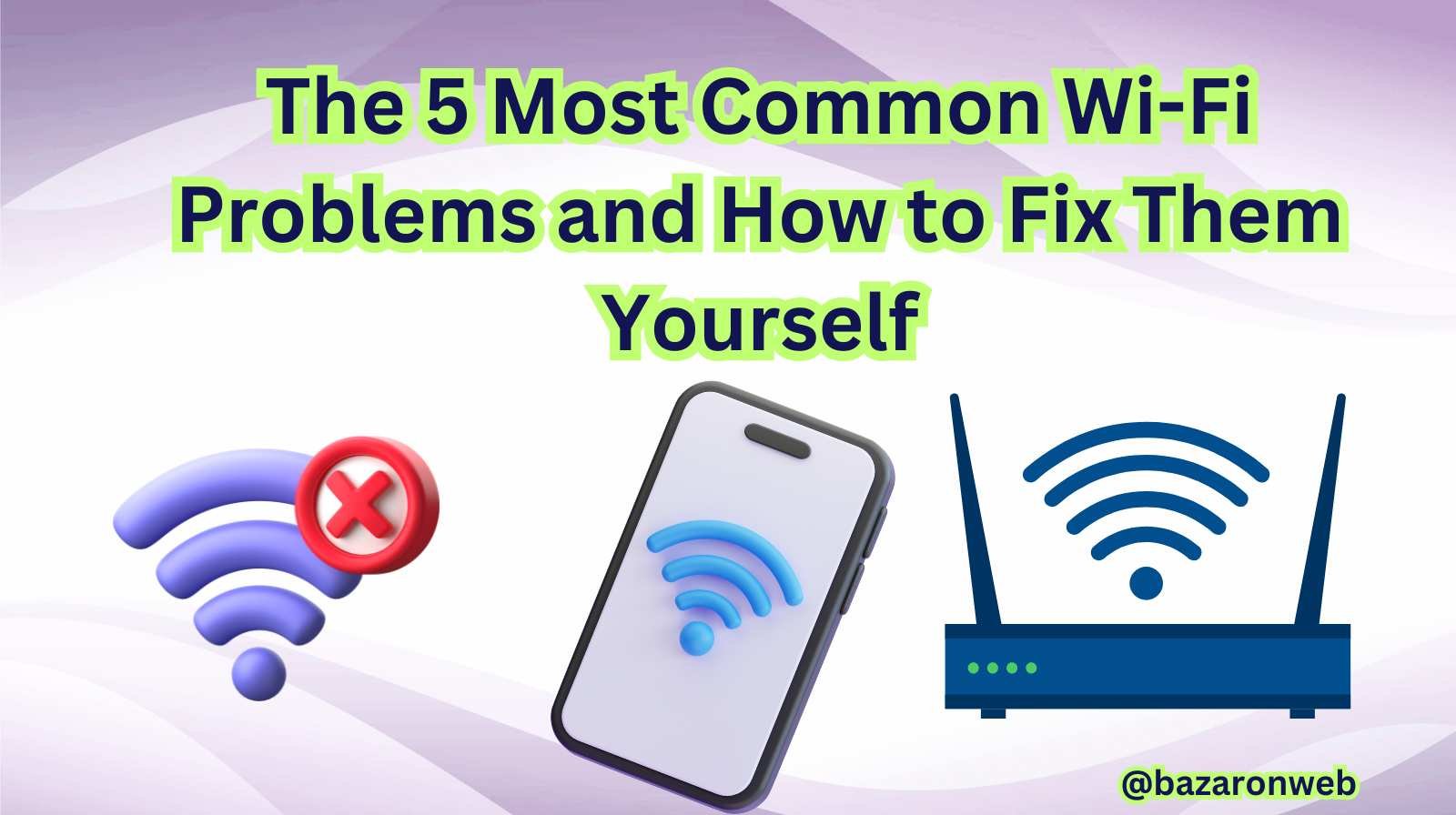Category
Popular Articles
- AI (9)
- Android (35)
- App Suggest (4)
- Apple (5)
- Apple TV (2)
- Bluetooth (2)
- Cars (2)
- ChatGpt (1)
- Did you know? (1)
- E-Commerce News (1)
- Ecommerce Websites business (7)
- Electronics Shopping (5)
- Fashion Tips (3)
- Gaming (3)
- Google Gemini (3)
- Hair Care Tips (2)
- How to (13)
- iCloud (1)
- Infotainment System (1)
- Iphone (93)
- Job Posting (1)
- Mac (18)
- Mobile Games (1)
- Netflix (1)
- Online Shopping Websites (2)
- Product Reviews (3)
- Roku TV (4)
- Samsung (7)
- Shopping Tips (10)
- Tech (58)
- Windows 11 (4)
Discounted Products
-
 Leo Creation 144 TC Cotton Double Jaipuri Prints Flat Bedsheet(Pack of 1, Blue, Gree, Red, Grey, Light Grey)
Leo Creation 144 TC Cotton Double Jaipuri Prints Flat Bedsheet(Pack of 1, Blue, Gree, Red, Grey, Light Grey)
₹2,999.00Original price was: ₹2,999.00.₹329.00Current price is: ₹329.00. -
 Home Garage 210 TC Cotton King Floral Fitted (Elastic) Bedsheet(Pack of 1, Grey)
Home Garage 210 TC Cotton King Floral Fitted (Elastic) Bedsheet(Pack of 1, Grey)
₹999.00Original price was: ₹999.00.₹299.00Current price is: ₹299.00. -
 Goodrik 140 TC Cotton Double 3D Printed Flat Bedsheet(Pack of 1, Brown)
Goodrik 140 TC Cotton Double 3D Printed Flat Bedsheet(Pack of 1, Brown)
₹499.00Original price was: ₹499.00.₹229.00Current price is: ₹229.00. -
 GLOBALSHOP 350 TC Microfiber Double Floral Flat Bedsheet(Pack of 1, Multicolor)
GLOBALSHOP 350 TC Microfiber Double Floral Flat Bedsheet(Pack of 1, Multicolor)
₹1,250.00Original price was: ₹1,250.00.₹263.00Current price is: ₹263.00. -
 RisingStar 250 TC Microfiber King Printed Fitted (Elastic) Bedsheet(Pack of 1, FITTED-ROUND-CIRCLES-PREMIUM)
RisingStar 250 TC Microfiber King Printed Fitted (Elastic) Bedsheet(Pack of 1, FITTED-ROUND-CIRCLES-PREMIUM)
₹2,299.00Original price was: ₹2,299.00.₹299.00Current price is: ₹299.00. -
 Home Garage 210 TC Cotton King Floral Fitted (Elastic) Bedsheet(Pack of 1, Fitted Black Green)
Home Garage 210 TC Cotton King Floral Fitted (Elastic) Bedsheet(Pack of 1, Fitted Black Green)
₹1,299.00Original price was: ₹1,299.00.₹299.00Current price is: ₹299.00. -
 Home Garage 180 TC Cotton King 3D Printed Flat Bedsheet(Pack of 1, White)
Home Garage 180 TC Cotton King 3D Printed Flat Bedsheet(Pack of 1, White)
₹999.00Original price was: ₹999.00.₹229.00Current price is: ₹229.00. -
 Home Sizzler 153 cm (5 ft) Polyester Room Darkening Window Curtain (Pack Of 2)(Floral, Maroon)
Home Sizzler 153 cm (5 ft) Polyester Room Darkening Window Curtain (Pack Of 2)(Floral, Maroon)
₹799.00Original price was: ₹799.00.₹299.00Current price is: ₹299.00. -
 Panipat Textile Hub 152.4 cm (5 ft) Polyester Window Curtain (Pack Of 2)(Solid, Aqua)
Panipat Textile Hub 152.4 cm (5 ft) Polyester Window Curtain (Pack Of 2)(Solid, Aqua)
₹1,899.00Original price was: ₹1,899.00.₹299.00Current price is: ₹299.00. -
 Home Sizzler 214 cm (7 ft) Polyester Semi Transparent Door Curtain (Pack Of 2)(Floral, Maroon)
Home Sizzler 214 cm (7 ft) Polyester Semi Transparent Door Curtain (Pack Of 2)(Floral, Maroon)
₹1,199.00Original price was: ₹1,199.00.₹399.00Current price is: ₹399.00. -
 Home Sizzler 153 cm (5 ft) Polyester Room Darkening Window Curtain (Pack Of 2)(Floral, Brown)
Home Sizzler 153 cm (5 ft) Polyester Room Darkening Window Curtain (Pack Of 2)(Floral, Brown)
₹799.00Original price was: ₹799.00.₹299.00Current price is: ₹299.00. -
 Stella Creations 214 cm (7 ft) Polyester Room Darkening Door Curtain (Pack Of 2)(Abstract, Brown)
Stella Creations 214 cm (7 ft) Polyester Room Darkening Door Curtain (Pack Of 2)(Abstract, Brown)
₹1,299.00Original price was: ₹1,299.00.₹449.00Current price is: ₹449.00. -
 Homefab India 152.5 cm (5 ft) Polyester Room Darkening Window Curtain (Pack Of 2)(Floral, Light Blue)
Homefab India 152.5 cm (5 ft) Polyester Room Darkening Window Curtain (Pack Of 2)(Floral, Light Blue)
₹1,199.00Original price was: ₹1,199.00.₹319.00Current price is: ₹319.00. -
 Urban Home 214 cm (7 ft) PVC Transparent Door Curtain Single Curtain(Solid, Off White)
Urban Home 214 cm (7 ft) PVC Transparent Door Curtain Single Curtain(Solid, Off White)
₹699.00Original price was: ₹699.00.₹203.00Current price is: ₹203.00. -
 Panipat Textile Hub 213 cm (7 ft) Polyester Door Curtain (Pack Of 2)(Solid, Brown)
Panipat Textile Hub 213 cm (7 ft) Polyester Door Curtain (Pack Of 2)(Solid, Brown)
₹1,199.00Original price was: ₹1,199.00.₹349.00Current price is: ₹349.00.
Affiliate Links
Promotion

Hey friends! Jessica here 👋
If you’re anything like me, you probably rely on Wi-Fi for everything — streaming Netflix, working from home, online shopping, even checking the weather before heading out. But when your Wi-Fi starts acting up — slow speeds, random disconnects, or dead zones — it can drive you absolutely crazy.
The good news? Most Wi-Fi issues aren’t as mysterious or complicated as they seem. You don’t always need to call your Internet Service Provider (ISP) or buy an expensive new router. In most cases, a few quick adjustments can bring your network back to life.
So, grab a cup of coffee and let’s troubleshoot together. I’ll walk you through the 5 most common Wi-Fi problems — and more importantly, how to fix them yourself using easy, practical steps.
1. Slow Wi-Fi Speed
Let’s start with the most common complaint: slow internet. You open a YouTube video, and it keeps buffering. Or you try to download a file, and it feels like you’re back in 2005.
Why it happens:
- Too many devices are connected at once (phones, TVs, smart home gadgets).
- Your router is outdated or poorly placed.
- You’re on a crowded Wi-Fi channel.
- Background apps are consuming bandwidth.
How to fix it:
Step 1: Run a Speed Test
Use a free tool like Speedtest.net or Fast.com to check your actual speeds. Compare the results to your plan. If your plan says 200 Mbps but you’re getting 20 Mbps, something’s off.
Step 2: Restart Your Router and Modem
Sometimes, your router just needs a fresh start.
Unplug both the router and modem → wait 30 seconds → plug them back in. This clears temporary glitches and resets the connection with your ISP.
Step 3: Move the Router to a Better Spot
Your router’s location makes a huge difference. Keep it:
- Away from walls and metal objects.
- Centrally located in your home.
- Elevated (a shelf or table, not the floor).
Wi-Fi signals spread out like ripples in water — if your router’s stuck in a corner or behind your TV, half your signal strength is lost before it even starts.
Step 4: Change the Wi-Fi Channel
In crowded neighborhoods, multiple routers compete on the same channel, causing interference.
Access your router’s settings (usually through 192.168.1.1 or the admin app) and switch to a less congested channel — typically 1, 6, or 11 on 2.4 GHz bands.
Step 5: Limit Background Usage
Pause cloud backups or software updates when gaming or streaming. Apps like Dropbox or Windows Update can quietly eat up your bandwidth.
Jessica’s Tip:
If your router supports dual-band Wi-Fi, connect heavy-duty devices like TVs or laptops to 5 GHz, and leave 2.4 GHz for smart devices and phones.
2. Wi-Fi Dead Zones in Certain Rooms
You know that one room in the house where Wi-Fi just disappears? You move a few steps, and suddenly your video call freezes. That’s a classic dead zone.
Why it happens:
- Thick walls or metal frames block the signal.
- The router’s range doesn’t cover the entire house.
- Interference from microwaves or cordless phones.
How to fix it:
Step 1: Reposition Your Router
Try moving the router to a more central location. Even a few feet can make a noticeable difference. Avoid placing it behind large appliances or near microwaves.
Step 2: Use a Wi-Fi Extender or Mesh System
If you have a large house or multiple floors, your router alone might not be enough.
- Wi-Fi Extenders: Cheap and easy to install. They capture the signal and rebroadcast it to cover distant rooms.
- Mesh Wi-Fi Systems: More advanced and seamless. They use multiple “nodes” to create a single, strong network across your home.
Recommended:
- TP-Link RE715X (Budget extender, around $79)
- Google Nest Wi-Fi Pro (Mesh system, around $299)
(Bazaronweb.com may earn affiliate commissions when you buy through Amazon links — at no extra cost to you!)
Step 3: Check for Signal Interference
Bluetooth devices, microwaves, and even baby monitors can weaken your Wi-Fi signal. If possible, move your router away from these electronics.
Step 4: Upgrade the Antennas
Some routers have detachable antennas — upgrading to high-gain antennas can increase coverage and reduce dead zones.
Jessica’s Tip:
For apartments or small homes, repositioning alone can fix the issue. But for multi-story houses, investing in a mesh network is the ultimate solution.
3. Devices Keep Disconnecting from Wi-Fi
You’re watching a movie, and suddenly — boom — the Wi-Fi disconnects. Or maybe your phone drops the network every time you move rooms.
Why it happens:
- Firmware issues with your router.
- Conflicting IP addresses.
- Router overheating or overloading.
- Power-saving settings on your device.
How to fix it:
Step 1: Update Your Router Firmware
Routers, just like computers, need software updates. Log in to your router’s admin page and check for a firmware update option. New updates often fix bugs that cause random disconnections.
Step 2: Reboot Regularly
Schedule a weekly router reboot — some modern routers even have an auto-restart setting.
Step 3: Assign Static IP Addresses
If multiple devices are fighting over IP addresses, assign static IPs to key devices (like your laptop or smart TV) in the router settings.
Step 4: Check Device Settings
Phones and laptops sometimes “forget” networks or switch to mobile data when the Wi-Fi signal drops slightly.
Go to your Wi-Fi settings and disable “Auto-switch to mobile data.”
Step 5: Monitor for Overheating
If your router feels hot, give it breathing room. Keep it away from direct sunlight or enclosed spaces.
Jessica’s Tip:
I once had this issue and discovered my router was sitting behind my TV — it was literally overheating every night! Just moving it away fixed the problem completely.
4. Wi-Fi Network Not Showing Up
You pull up your device’s Wi-Fi list — and your network’s just gone. It’s not your imagination; sometimes networks really disappear.
Why it happens:
- Router is broadcasting on an unsupported frequency.
- Network SSID is hidden.
- Hardware malfunction or power issue.
How to fix it:
Step 1: Restart Everything
Start with the basics: power-cycle your router, modem, and device. This resets connections.
Step 2: Check SSID Visibility
Log in to your router’s admin panel and make sure SSID broadcast is enabled. If it’s hidden for security, you’ll need to manually add it on your device.
Step 3: Ensure Frequency Compatibility
Some older laptops and phones can’t detect 5 GHz networks. If your router is set to broadcast only 5 GHz, enable 2.4 GHz too.
Step 4: Reset Network Settings on Your Device
On iPhone:
Settings → General → Transfer or Reset iPhone → Reset Network Settings
On Android:
Settings → System → Reset Options → Reset Wi-Fi, Mobile & Bluetooth
This clears out corrupted configurations.
Step 5: Factory Reset the Router (as a last resort)
If all else fails, press and hold the router’s reset button (usually for 10–15 seconds). You’ll need to reconfigure your network after this, so do it only when necessary.
Jessica’s Tip:
Before assuming the router’s dead, check if its LEDs are lit properly. If not, the issue could be as simple as a loose power cable or faulty adapter.
5. Router Keeps Dropping the Internet Connection
This one’s sneaky — your Wi-Fi signal looks fine, but the internet itself keeps cutting out. It’s like having a strong engine with no fuel.
Why it happens:
- ISP service interruptions.
- Loose cables or damaged Ethernet ports.
- Router overheating or reaching end-of-life.
- Firmware corruption.
How to fix it:
Step 1: Check the ISP First
Before spending hours troubleshooting, visit your ISP’s website (using mobile data) or call their hotline. Outages happen more often than we think.
Step 2: Inspect the Cables
Loose or damaged Ethernet cables can intermittently drop the connection. Replace them if you notice fraying or kinks.
Step 3: Update the Router Firmware
As mentioned earlier, outdated firmware can cause instability. Always install the latest updates from the manufacturer.
Step 4: Disable Automatic Channel Selection
Sometimes routers automatically hop channels to “optimize performance,” which ironically causes drops. Manually set your preferred channel.
Step 5: Replace Old Routers
If your router is over 4–5 years old, it might simply be reaching the end of its life. Technology evolves, and newer models handle multiple devices more efficiently.
Jessica’s Tip:
When upgrading, look for routers with Wi-Fi 6 or 6E support. They’re faster, more stable, and built for homes full of smart devices.
Bonus: Quick Maintenance Tips for Reliable Wi-Fi
- Restart the router weekly. It prevents memory leaks and keeps connections stable.
- Use strong passwords. Weak passwords can invite freeloaders and slow speeds.
- Avoid placing the router near windows. The signal can “leak” outside instead of staying indoors.
- Name your networks clearly. Avoid confusing duplicate SSIDs like “Home_WiFi” and “Home_WiFi_2.4G.”
- Keep firmware and devices updated. Outdated software often causes disconnections.
Jessica’s Personal Setup (and Why It Works)
I live in a two-bedroom apartment and work remotely, so stable Wi-Fi is non-negotiable. Here’s what I use:
- Router: TP-Link Archer AX55 (Wi-Fi 6)
- Mesh Node: TP-Link Deco XE75 (for better bedroom coverage)
- Speed Plan: 500 Mbps Fiber
- Placement: Central shelf, away from appliances
Since switching to this setup, my connection stays stable, even with multiple smart devices and video calls running at once.
Final Thoughts
Wi-Fi problems can feel like magic gone wrong — one moment everything’s perfect, the next it’s chaos. But as you’ve seen, most of these issues have simple, logical fixes.
Before calling your ISP or buying new hardware, try the basics: restart, reposition, update, and test. You’ll be surprised how often those quick fixes restore full speed and stability.
And if all else fails, investing in a modern router or mesh system is totally worth it — especially with today’s affordable Wi-Fi 6 models.
Reliable Wi-Fi isn’t a luxury anymore — it’s a necessity. And with a few tweaks, you can make sure your home network runs smoothly every day.
Happy surfing!
— Jessica
Disclaimer:
The troubleshooting steps and product suggestions in this article are based on personal research and reliable tech sources. Always use caution when updating firmware or resetting hardware. Bazaronweb.com participates in the Amazon Associates Program and may earn commissions from qualifying purchases.
Written by Bazaronweb
Latest Tech Articles
- How to build a sustainable wardrobe on a budget

- AI for Personal Finance: Using Bots to Budget, Invest, and Plan

- Ethical AI Usage: Data Privacy, Automation, and the Future of Work

- AI Writing Tools vs. Automation Platforms: The Ultimate Guide to Boosting Productivity in 2026

- How to Use AI (Like ChatGPT) for Daily Workflows, Content Creation, and Side Projects

Products
-
![Apple Watch Ultra 3 [GPS + Cellular 49mm] Running & Multisport Smartwatch w/Rugged Titanium Case w/Black Titanium Milanese Loop - M. Satellite Communications, Advanced Health & Fitness Tracking](https://bazaronweb.com/retailstores/wp-content/uploads/2025/09/apple-watch-320x320.jpg) Apple Watch Ultra 3 [GPS + Cellular 49mm] Running & Multisport Smartwatch w/Rugged Titanium Case w/Black Titanium Milanese Loop - M. Satellite Communications, Advanced Health & Fitness Tracking
Apple Watch Ultra 3 [GPS + Cellular 49mm] Running & Multisport Smartwatch w/Rugged Titanium Case w/Black Titanium Milanese Loop - M. Satellite Communications, Advanced Health & Fitness Tracking
-
 Apple iPad mini (A17 Pro): Apple Intelligence, 8.3-inch Liquid Retina Display, 256GB, Wi-Fi 6E, 12MP Front/12MP Back Camera, Touch ID, All-Day Battery Life — Purple
Apple iPad mini (A17 Pro): Apple Intelligence, 8.3-inch Liquid Retina Display, 256GB, Wi-Fi 6E, 12MP Front/12MP Back Camera, Touch ID, All-Day Battery Life — Purple
-
 Apple AirPods Max Wireless Over-Ear Headphones, Active Noise Cancelling, Transparency Mode, Personalized Spatial Audio, Dolby Atmos, Bluetooth Headphones for iPhone – Space Gray
Apple AirPods Max Wireless Over-Ear Headphones, Active Noise Cancelling, Transparency Mode, Personalized Spatial Audio, Dolby Atmos, Bluetooth Headphones for iPhone – Space Gray
-
 Apple AirPods Pro 2 Wireless Earbuds, Active Noise Cancellation, Hearing Aid Feature, Bluetooth Headphones, Transparency, Personalized Spatial Audio, High-Fidelity Sound, H2 Chip, USB-C Charging
Apple AirPods Pro 2 Wireless Earbuds, Active Noise Cancellation, Hearing Aid Feature, Bluetooth Headphones, Transparency, Personalized Spatial Audio, High-Fidelity Sound, H2 Chip, USB-C Charging
-
 Leo Creation 144 TC Cotton Double Jaipuri Prints Flat Bedsheet(Pack of 1, Blue, Gree, Red, Grey, Light Grey)
Leo Creation 144 TC Cotton Double Jaipuri Prints Flat Bedsheet(Pack of 1, Blue, Gree, Red, Grey, Light Grey)
₹2,999.00Original price was: ₹2,999.00.₹329.00Current price is: ₹329.00.
Leave a Reply